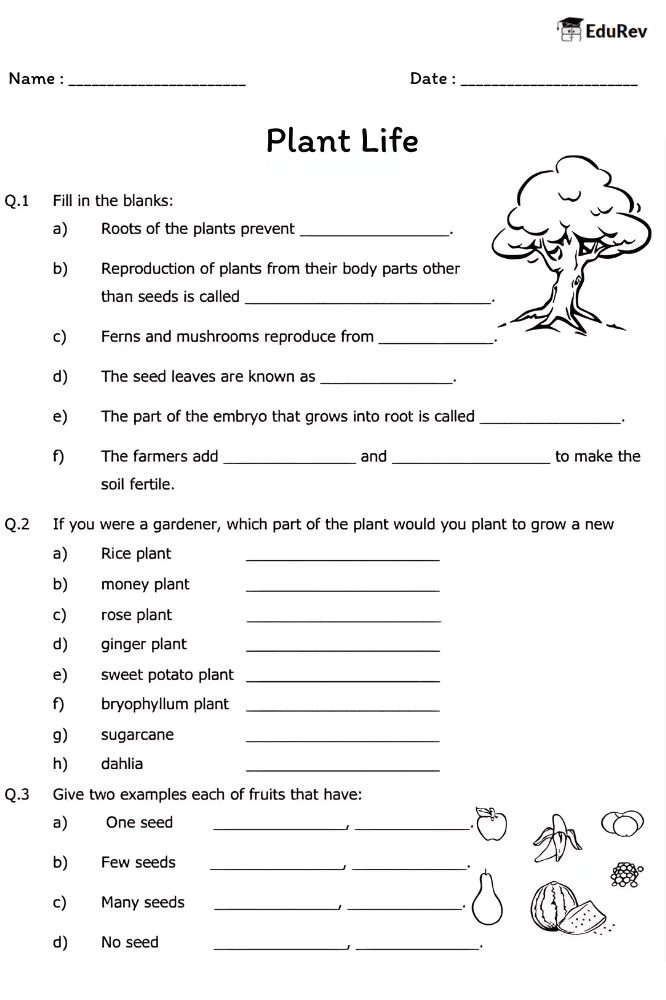Class 5 Exam > Class 5 Notes > Science Class 5 > Printable Worksheet: Plant Life
Printable Worksheet: Plant Life | Science Class 5 PDF Download

The document Printable Worksheet: Plant Life | Science Class 5 is a part of the Class 5 Course Science Class 5.
All you need of Class 5 at this link: Class 5
|
42 videos|230 docs|45 tests
|
FAQs on Printable Worksheet: Plant Life - Science Class 5
| 1. What are the main parts of a plant and their functions? |  |
Ans. The main parts of a plant include the roots, stems, leaves, flowers, and fruits. Roots anchor the plant in the soil and absorb water and nutrients. Stems provide support and transport water and nutrients between roots and leaves. Leaves are the primary sites for photosynthesis, where plants convert sunlight into energy. Flowers are involved in reproduction, producing seeds, while fruits protect the seeds and aid in their dispersal.
| 2. How do plants perform photosynthesis? |  |
Ans. Photosynthesis is the process by which plants convert sunlight into energy. It occurs mainly in the leaves, where chlorophyll absorbs sunlight. During this process, plants take in carbon dioxide from the air and water from the soil. Using the energy from sunlight, they convert these substances into glucose (a type of sugar) and oxygen. The overall chemical equation for photosynthesis is: 6CO2 + 6H2O + light energy → C6H12O6 + 6O2.
| 3. What is the role of plant hormones in growth and development? |  |
Ans. Plant hormones, also known as phytohormones, are chemicals that regulate various aspects of plant growth and development. Key hormones include auxins, gibberellins, cytokinins, ethylene, and abscisic acid. Auxins promote cell elongation and are involved in responses to light (phototropism). Gibberellins stimulate stem elongation and seed germination. Cytokinins promote cell division, while ethylene influences fruit ripening. Abscisic acid helps plants respond to stress, such as drought.
| 4. How do plants adapt to their environment? |  |
Ans. Plants adapt to their environment through various structural and physiological changes. For example, desert plants like cacti have thick, waxy skin to reduce water loss and deep roots to access underground water. In contrast, plants in wet environments may have broad leaves to maximize sunlight capture. Some plants, like those in temperate regions, may lose their leaves in winter to conserve energy. These adaptations help plants survive and thrive in their specific habitats.
| 5. What are the different types of plant reproduction? |  |
Ans. Plants can reproduce in two main ways: sexual and asexual reproduction. Sexual reproduction involves the combination of genetic material from two parent plants, usually through the formation of seeds after pollination. Asexual reproduction, on the other hand, does not involve seeds and can occur through methods like cuttings, runners, tubers, or bulbs. Each method has its advantages, with sexual reproduction promoting genetic diversity and asexual reproduction allowing for rapid population growth.
Related Searches






















